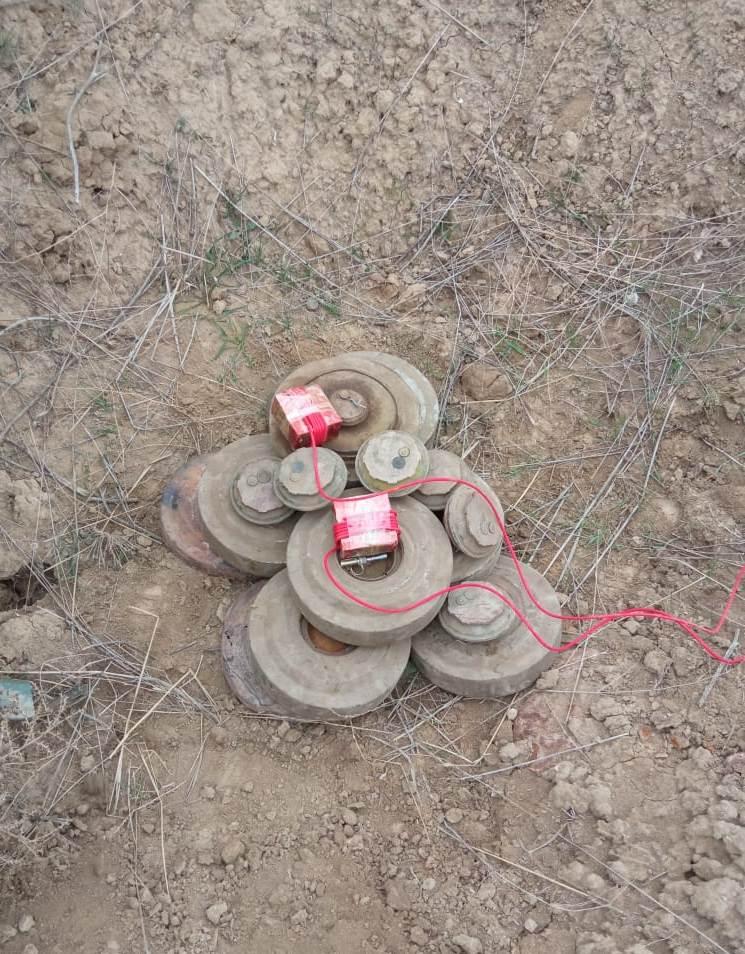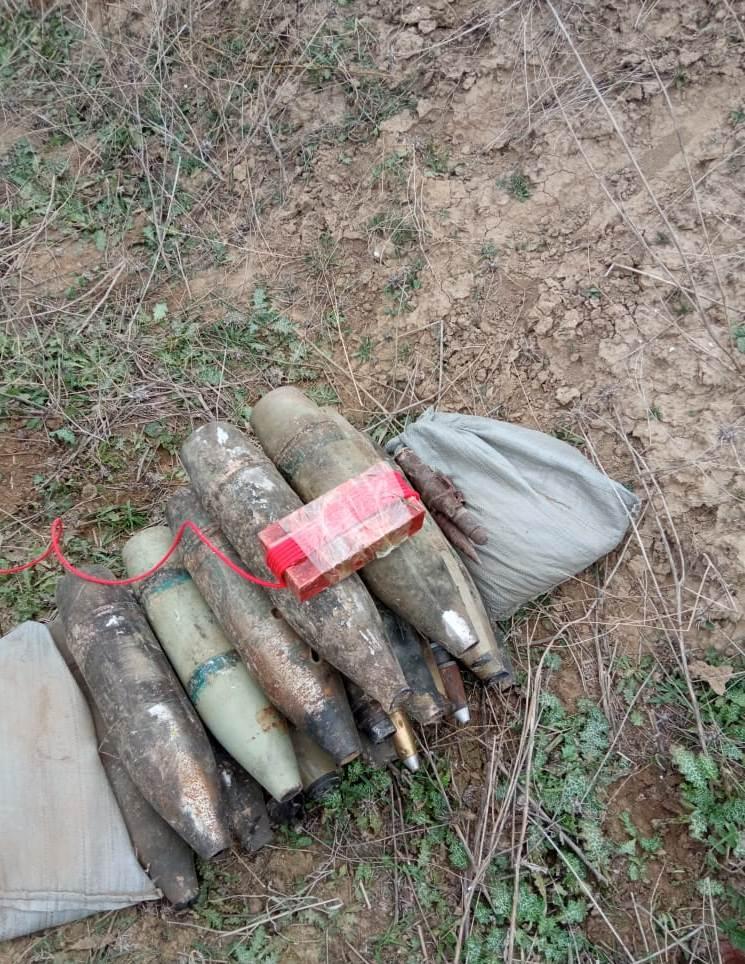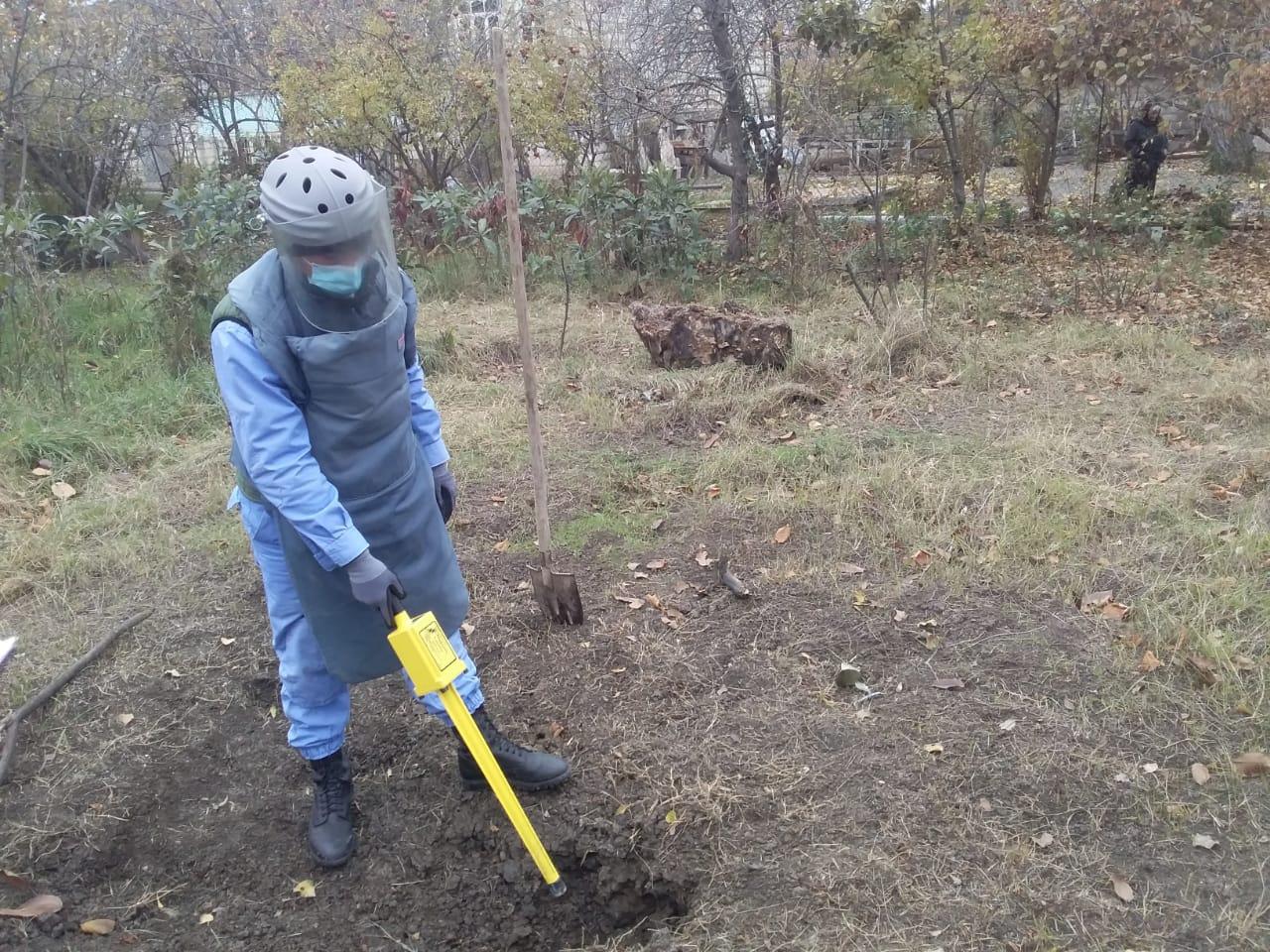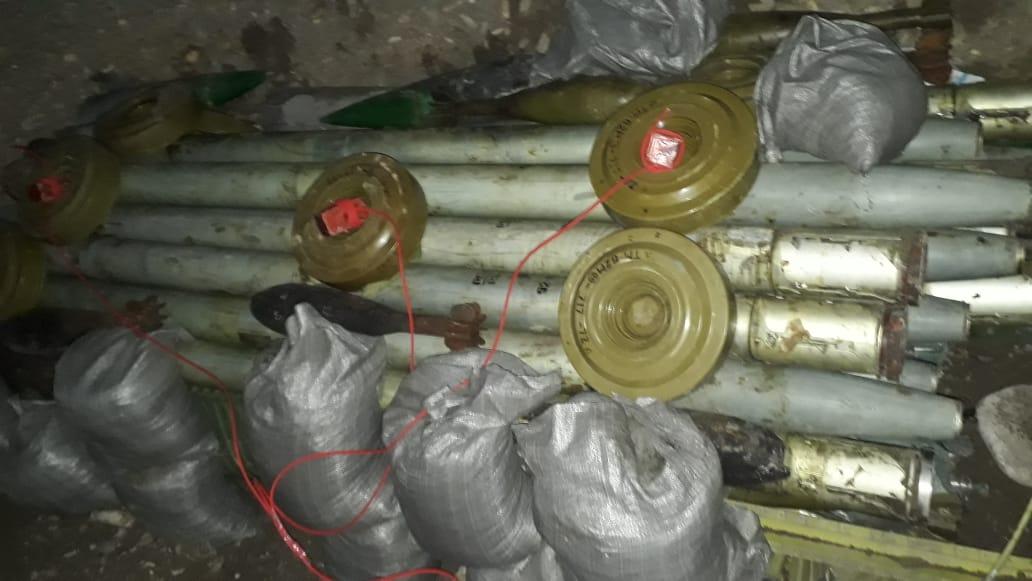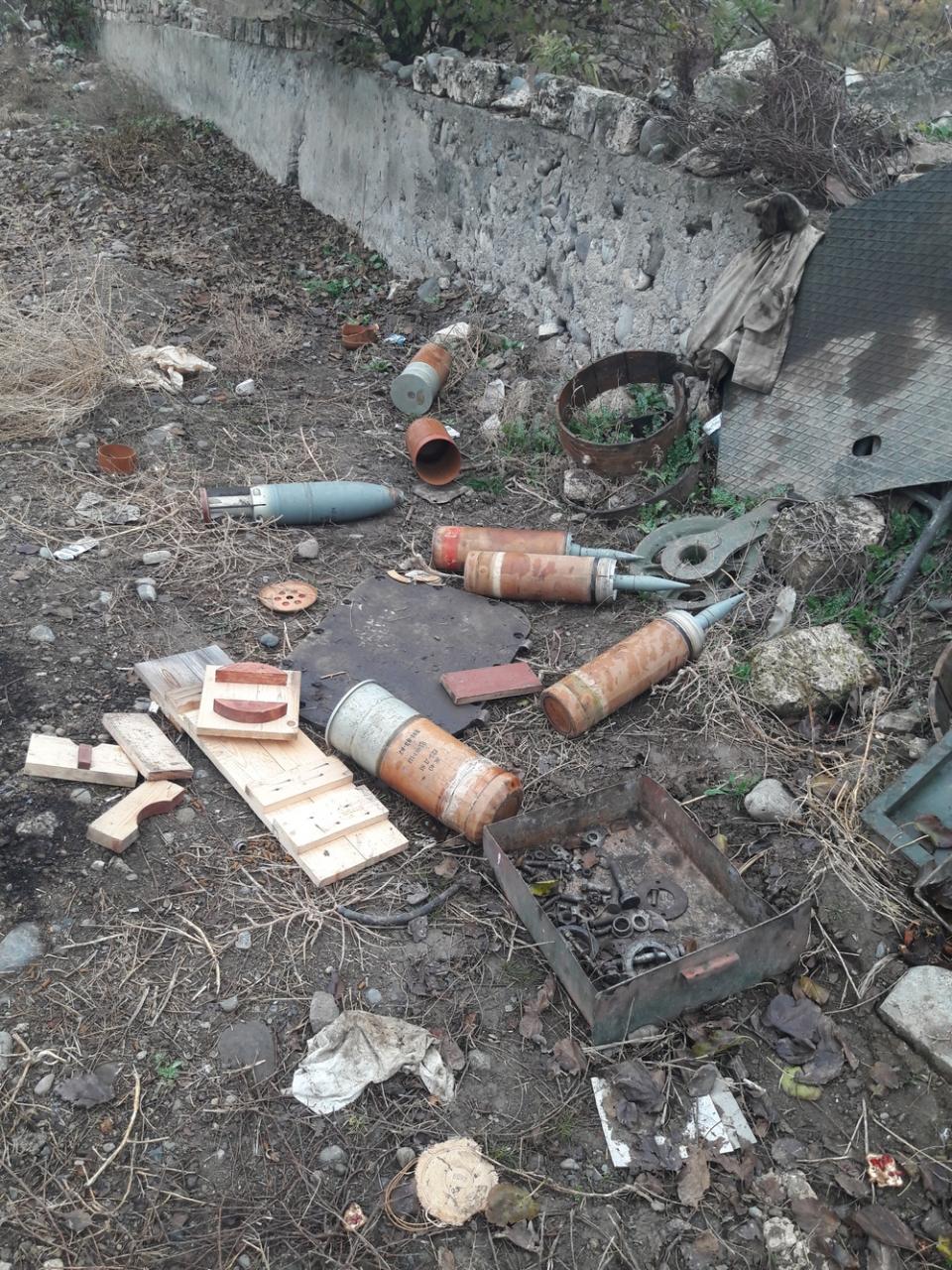Large amount of munitions rendered harmless on liberated lands
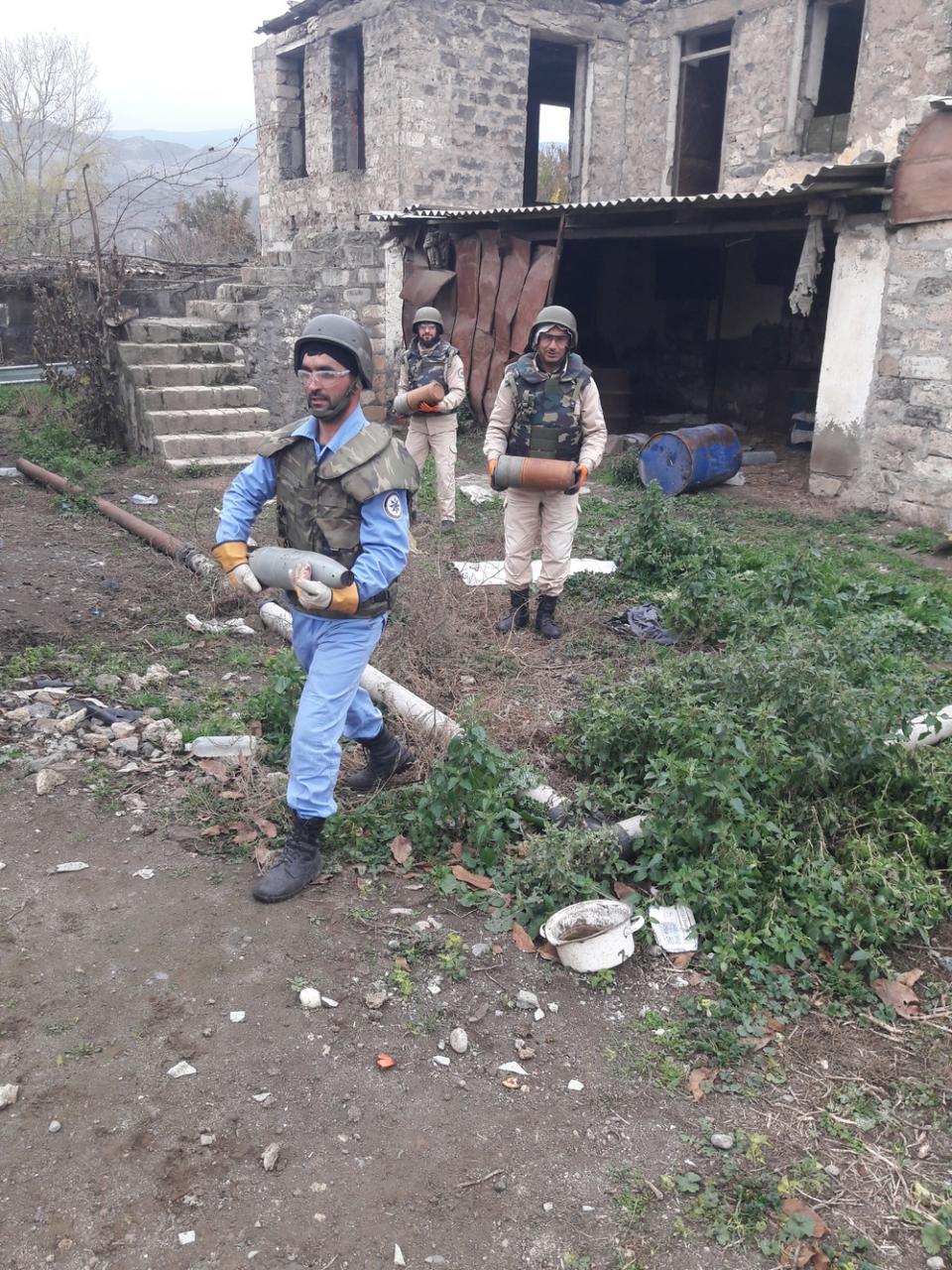
By Vafa Ismayilova
The National Agency for Mine Action (ANAMA) has reported that its teams cleared 102 mines and unexploded ordnance, and mine safety awareness campaigns were conducted among 80,141 civilians between December 3 and 6.
The agency reported on its website that it had received 33 appeals from the Interior Ministry's call centre service and two appeals from the Emergencies Ministry's crisis management centre about the discovery of shells on the territories of Aghdam, Jabrayil, Fuzuli, Gubadli and Tartar regions.
On the basis of the abovementioned calls, 30 operations were carried out by the agency's special mobile operational groups.
During the search operations, 178 unexploded ordnance, 13 anti-tank mines, 25 anti-personnel mines, 6,700 bullets of various calibers, 12 exploded shell remnants were found, ANAMA said.
On November 30, ANAMA director Gazanfar Ahmadov stated that 535 civilians had died and 2,418 had been injured in mine explosions in Azerbaijan.
According to Ahmadov, the agency conducts activities to educate citizens so that they do not touch dangerous, unknown objects, devices, and ammunition.
He urged citizens to report all suspicious items to regional police departments and executive administrations.
From September 27 to November 10, ANAMA found 727 unexploded shells, 4,330 antipersonnel mines, 1,110 anti-tank mines, 1,743 anti-tank mine fuses, 76 detonators, 1,393 9N235 bombs, 10,730 bullets of various calibers, 2 gas grenades, 168 grams of gunpowder, 27 metrological radio direction finders used for military purposes, 7 drones (defused), 2 missile chips and 1,643 unexploded missile fragments.
The 44 days of war in and around Nagorno-Karabakh ended with the Russian-brokered peace deal signed on November 10 by the Azerbaijani, Russian and Armenian leaders. Under the peace agreement Azerbaijan’s Kalbajar, Aghdam and Lachin regions were vacated by the Armenians by December 1. The agreement also envisages the return of Azerbaijani IDPs to Azerbaijan’s Nagorno-Karabakh and the seven adjacent regions under the control of the United Nations High Commissioner for Refugees.
The clashes between Armenia and Azerbaijan resumed after Armenia launched large-scale attacks on Azerbaijani forces and civilians on September 27. Five Azerbaijani civilians were killed in the first day of the Armenian attacks. Over 90 Azerbaijani civilians were killed in Armenian's indiscriminate attacks on Azerbaijani civilians. Azerbaijan launched counter-offensive operations that ended in the liberation of over 300 settlements, villages. Azerbaijan also liberated five city centres and the historic Shusha city that was liberated on November 8.
The peace agreement ended the 30-year-old conflict between Baku and Yerevan over Azerbaijan’s Nagorno-Karabakh region that along with the seven adjacent districts came under the occupation of Armenian armed forces in the war in the early 1990s. For about three decades, Armenia failed to implement the UN Security Council resolutions demanding the withdrawal of the Armenian troops, which was the main obstacle to the resolution of the conflict.
--
Follow us on Twitter @AzerNewsAz
Here we are to serve you with news right now. It does not cost much, but worth your attention.
Choose to support open, independent, quality journalism and subscribe on a monthly basis.
By subscribing to our online newspaper, you can have full digital access to all news, analysis, and much more.
You can also follow AzerNEWS on Twitter @AzerNewsAz or Facebook @AzerNewsNewspaper
Thank you!

